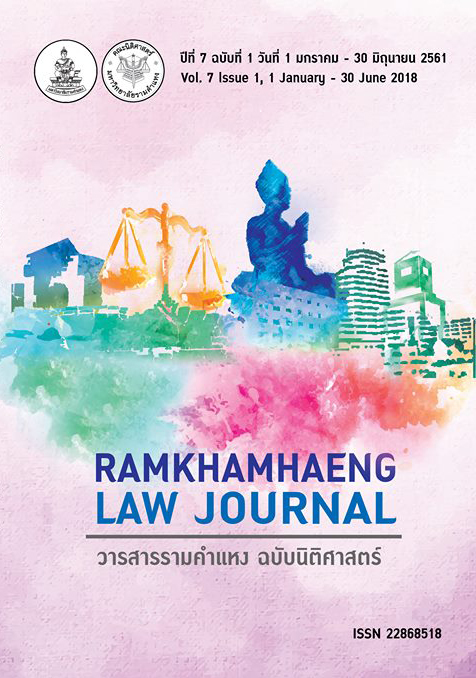สิทธิของผู้ป่วยที่สิ้นหวังในการตายอย่างสงบ ในจังหวัดมหาสารคาม
Main Article Content
Abstract
The right to euthanasia of hopeless patients under Thai law is clear and accepted, especially on the matter of passive euthanasia (letting go), and shall be expressed in writing, a so called “advance directive,” under Section 12of the National Health Act B.E. 2550. The argument for active euthanasia for hopeless patients, however, still exists as to whether it is legal or illegal. If active euthanasia has not been recognized by any provision of law, Thai people do not have the legal right to choose to die. Thus, such an action is illegal in Thailand. According to in-depth interviews in Mahasarakham Province, most medical professionals and lawyers know that the advance directive has been recognized by Section 12 of the Act, although some are not familiar with the details of the Act. On the other hand, students and people do not know that such a provision exists. Therefore, they do not know that they have, and can exercise, the right to make an advance directive. The suggestion in this study is that people should be educated regarding the existence of the right, and the legal process under the Act, and people for whom the act may be an issue should be trained, so that they understand the rights and process under such Act.
Article Details
References
ทวีเกียรติ มีนะกนิษฐ. “กฎหมายกับการปล่อยให้ตายอย่าสงบ.” บทบัณฑิตย์ 49, 4 (ธันวาคม 2536): 41-48.
วิฑูรย์ อึ้งประพันธ์. “สิทธิที่จะตาย (Right to die).” ดุลพาห 43, 4 (ตุลาคม-ธันวาคม 2539): 90-125.
______. “ปฏิญญาว่าด้วยสิทธิผู้ป่วยของแพทยสมาคมโลก.” คลินิก 24, 10 (ตุลาคม 2551): 922-924.
แสวง บุญเฉลิมวิภาส และเอนก ยมจินดา. กฎหมายการแพทย์ (Medical Laws) : วิเคราะห์ปัญหากฎหมายจากการเริ่มต้นของชีวิตในครรภ์มารดาถึงภาวะแกนสมองตาย. พิมพ์ครั้งที่ 2. กรุงเทพมหานคร: สำนักพิมพ์วิญญูชน, 2546.
Rhona K.M. Smith. Textbook on International Human Rights. Oxford: Oxford University Press, 2003.

